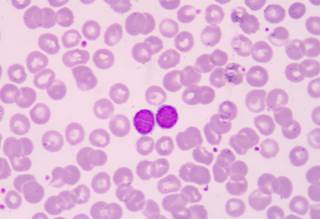February 21, 2019

The main finding of this study was that the numbers of CD4+T, CD8+T, CD19+B, and CD56+NK cells were significantly reduced by treatment with FAEs.
Increased pharmacovigilance by additionally monitoring distinct T cell subset count in addition to absolute lymphocyte counts may provide more meaningful insights into the safety and efficacy of fumaric acid esters (FAEs) for the treatment of psoriasis, according to a study published in the Journal of the European Academy of Dermatology and Venereology.
This investigator-initiated subcohort study reviewed continuously recorded clinical and laboratory findings in patients with psoriasis (N=371) who were prescribed Fumaderm® between January 1996 and October 2012. Investigators quantitatively analyzed peripheral blood lymphocyte subsets data using flow cytometry before and during treatment with FAEs. All patients received monthly clinical assessments and quarterly complete blood count tests. The following antibodies were used: T lymphocytes (CD3+), helper T lymphocytes (CD3+CD4+), cytotoxic T lymphocytes (CD3+CD8+), B lymphocytes (CD19+), and natural killer (NK) cells (CD3-CD16+CD56+).
The main finding of this study was that the numbers of CD4+T, CD8+T, CD19+B, and CD56+NK cells were significantly reduced by treatment with FAEs. The mean lymphocyte count was significantly decreased by 23.9% within the first 3 months of treatment, and the counts continued to decrease over the course of treatment by approximately 40% of baseline values. The mean CD4+T cell and the mean CD8+T cell counts each declined significantly by 49.9% and 55.7%, respectively. The CD19+ B cell and CD56+ NK cell counts also decreased significantly by 27.7 % and 21.9 %, respectively, compared with mean baseline values.
This study was limited by its utilization of a retrospective data set. The data reported reflect the clinical experience of a single tertiary care center and may not be representative of the entire population of patients with psoriasis.
Based on their findings and long-term experience, the authors suggest that periodic monitoring of CD4+ and CD8+T cell counts in intervals of 4 months or fewer, in addition to monthly complete blood count and lymphocyte count, seems to be clinically relevant for making therapeutic decisions regarding continual and long-term use of FAEs.
Disclosures: This study was partly supported by Biogen GmbH, Ismaning, Germany. Please see the original reference for a complete list of authors’ disclosures.
Reference
Dickel H, Bruckner T, Höxtermann S, Dickel B, Trinder E, Altmeyer P. Fumaric acid ester-induced T cell lymphopenia in the real-life treatment of psoriasis [published online January 24, 2019]. J Eur Acad Dermatol Venereol. doi: 10.1111/jdv.15448